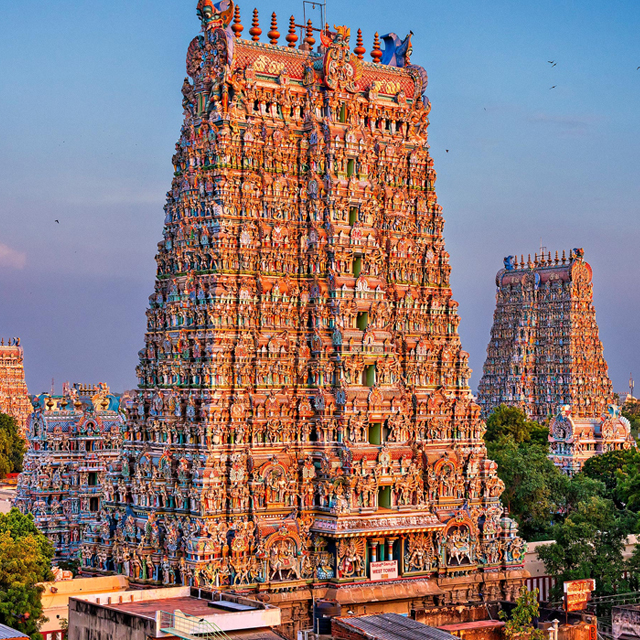A pilgrimage is a religious journey that has immense spiritual significance. We all long to embark on a pilgrimage that brings us closer to our faith and beliefs.
India is a land of numerous religious beliefs. There are countless temples, Churches, Mosques, Gurudwaras, monasteries, and other religious buildings scattered throughout this spiritual land. All these pilgrimage destinations are included in pilgrimage tours to India. There is a place of worship for every pilgrim, whether Hindu, Muslim, Sikh, or Christian.
A pilgrimage tour to India leads you to spiritual bliss and gives you an insight into the different cultures and customs of India.
Here, we are listing the most visited religious destinations in India:
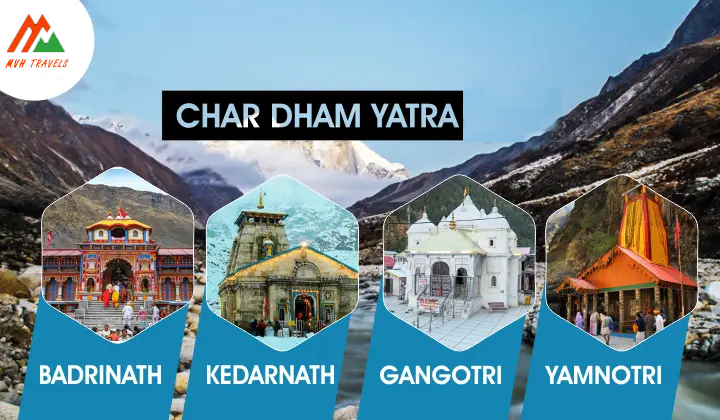
One of the most important and pious pilgrimages in India, the Char Dham Yatra covers the four most revered Hindu shrines: Yamunotri, Kedarnath, Gangotri, and Badrinath. The sacred Char Dham pilgrimage takes place in the Indian Himalayas of Uttarakhand. These four religious sites form the most important center of religious activity in North India.
Yamunotri is the seat of Goddess Yamuna in Hinduism and is the source of the holy river Yamuna. Gangotri is the abode of Goddess Ganga and the source of the revered Ganga River. Badrinath, the most important of all the sites, is where Hindu god Vishnu resides, and Kedarnath, where Lord Shiva is present in the form of Jyotirlinga.
The Yatra starts from Yamunotri, then proceeds towards Gangotri, and finally reaches Kedarnath and Badrinath. During the yatra, devotees can also visit one of the most popular pilgrimage sites in India, Gurdwara Shri Hemkunt Sahib.
Devotees from all over the world embark on the Char Dham Yatra, as it is believed to wash away all sins and attain salvation.
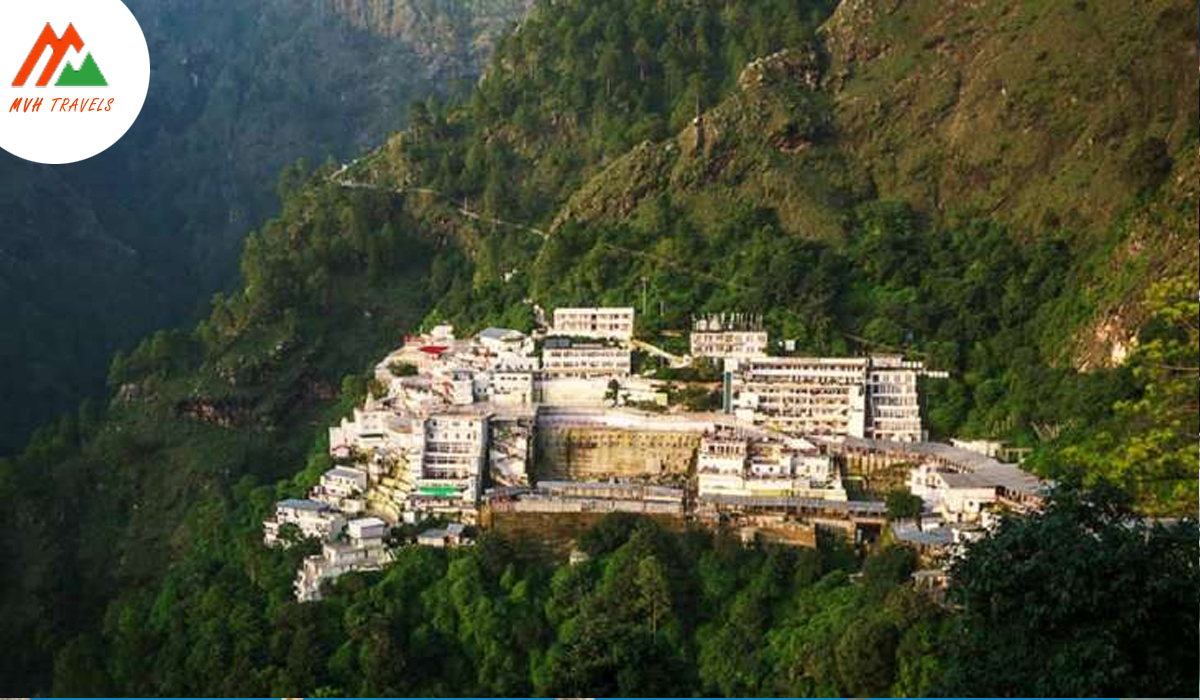
Vaishno Devi Yatra
The Vaishno Devi Yatra is considered one of the holiest pilgrimages in India. The sacred cave of Maa Vaishno is located at an altitude of 5,200 feet. Devotees embark on a 12-kilometer trek to Mata Vaishno Bhawan from Katra Base Camp. Maa Vaishno resides in a sacred cave at the foot of the Trikuta Mountains.
Once they have done so, the followers enter the Sacred Cave to seek Mata Vaishno’s blessings. Mata Vaishno is present in the form of Pindies in the cave, which are natural rock formations. The Darshan in the pilgrimage remains open throughout the year.
The Maa Vaishno Shrine enjoys year-round acclaim because devotees believe that the goddess grants their wishes. People have constant faith in the blessings of Maa Vaishno and flock to the shrine from all over the world.
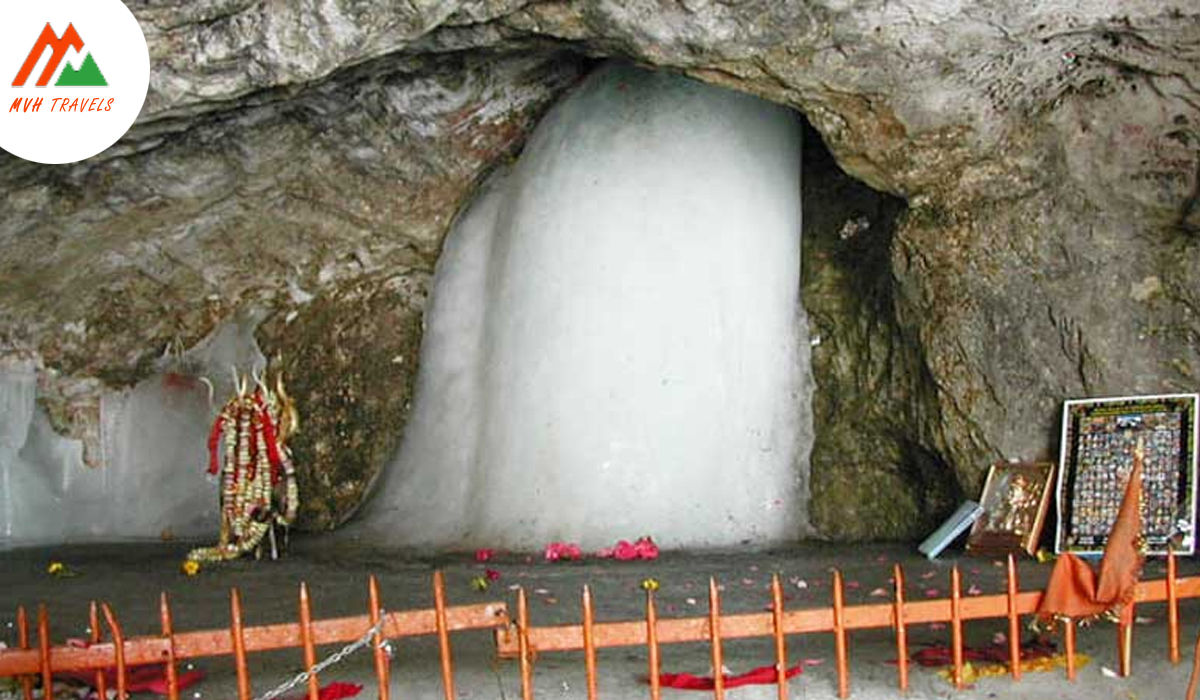
Amarnath Yatra
Situated at an elevation of 3888 m in Jammu and Kashmir is one of the most revered shrines in India, the Amarnath cave. The cave has a stalagmite that is formed due to the freezing of water droplets that fall from the ceiling of the cave to the ground. This stalagmite is considered a Shiva linga in Hinduism.
Dedicated to Lord Shiva, this shrine has immense religious importance among the Hindus. The cave within which this ice formation is present is covered in snow most of the year. That is why Amarnath Yatra only remains open to devotees for a short time in the summer. During this time, thousands of devotees from across the country and the world embark on this sacred pilgrimage, which takes them through challenging mountainous terrain. Some religious beliefs claim that Lord Shiva’s lingam in this cave keeps growing and shrinking according to the phases of the moon.
Hindu mythology holds that Lord Shiva revealed the mysteries of life and eternity to his divine consort, Parvati, in the cave. Apart from the main lingam of Lord Shiva, there are two other ice formations in the cave, which are those of Goddess Parvati and Lord Shiva’s son Ganesha.
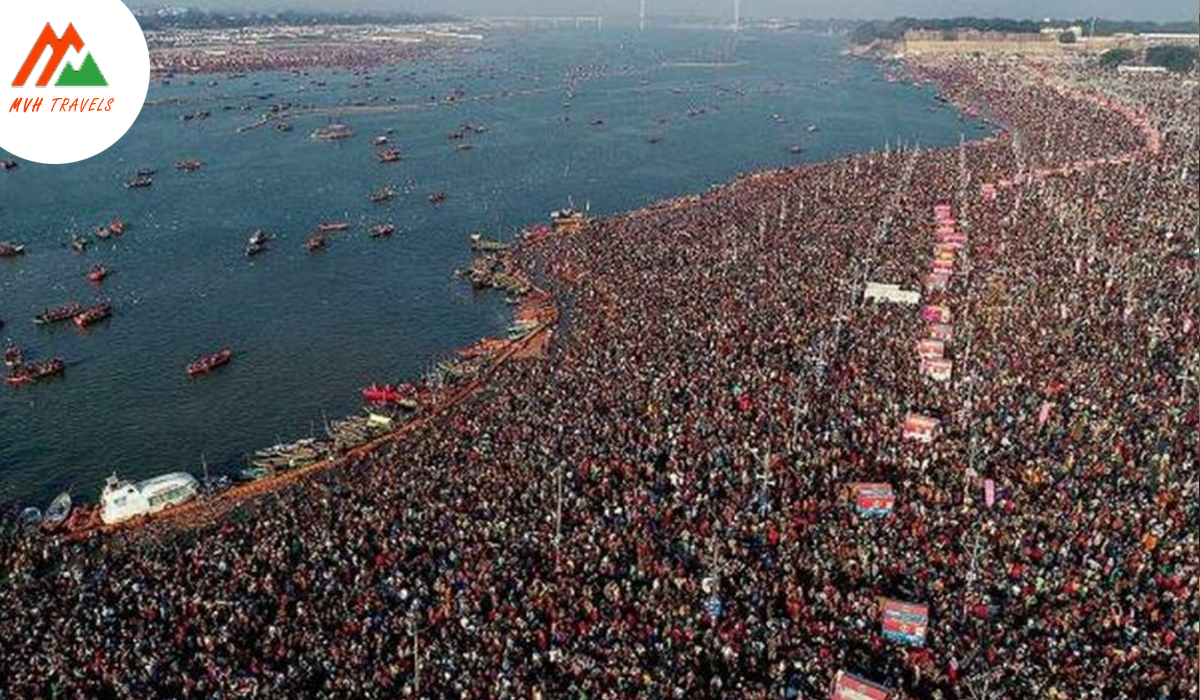
Kumbh Mela
One of the most popular and sacred festivals in India, Kumbh Mela, is organized every 12 years on a grand scale. According to legend, when the gods and demons quarreled over the pot of Amrita (nectar of immortality), Lord Vishnu flew away with that pot of nectar. As he carried the vial away, drops of nectar spilled out in four different places. These are the same four places where the famous Kumbh Mela is held: Haridwar, Nashik, Prayag, and Ujjain.
Kumbh Mela is a huge gathering where people of different faiths and religions come together to celebrate their devotion to God. The Mela is also known as the largest peaceful gathering in the world, as it is packed with around 100 million pilgrims, saints, and travelers.
The most important event of the festival is the ritual bath that takes place on the banks of the river, located near the place where the Kumbh Mela is held. Along with this ritual, several other activities are carried out, such as religious gatherings, songs of adoration, and mass feedings of the underprivileged.
The Akhil Bharatiya Akhada Parishad, or ABAP, has announced the Nashik Kumbh Mela dates for this year. The event will begin with the raising of the flag on July 14, 2015, at Ram Kunda.
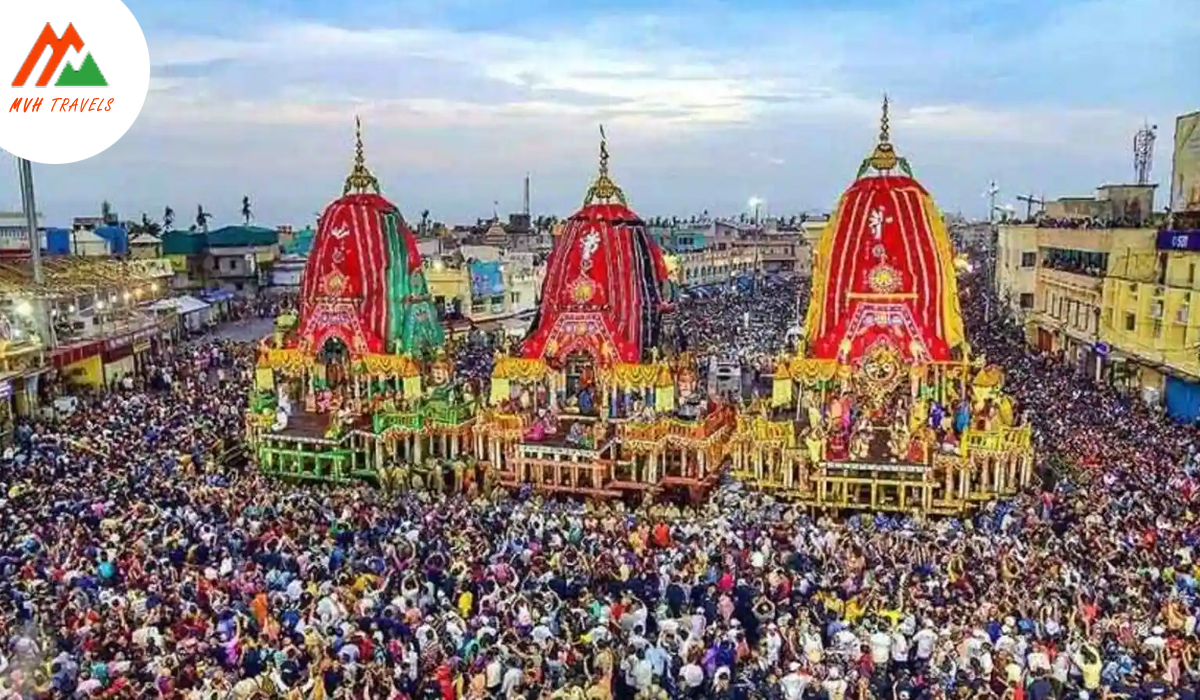
Puri Rath Yatra
The famous chariot festival, or Rath Yatra, is a Hindu festival celebrating Lord Jagannath’s visit to the Gundicha temple through his aunt’s house in Puri. The annual festival is held on Ashad Shukla Dwitiya (the second day of the brilliant fortnight of Ashad month).
During the festival, the idols of Lord Jagannath, Balabhadra, and Subhadra are taken in procession to the Gundicha Temple, where they remain for nine days. After nine days, the deities are returned to the main temple. The return journey of Lord Jagannath is known as the Bahuda Yatra. The three chariots of the deities are beautifully decorated and pulled through the streets of Puri. The entire yatra is a recreation of Lord Jagannath, Lord Balabhadra, and his sister Subhadra’s yearly journey to his aunt’s temple, Gundicha Temple, located two kilometers from the main temple. This is the day when every devotee catches a glimpse of the deities. People from all over the world visit Puri to participate in cart pulling with other priests.
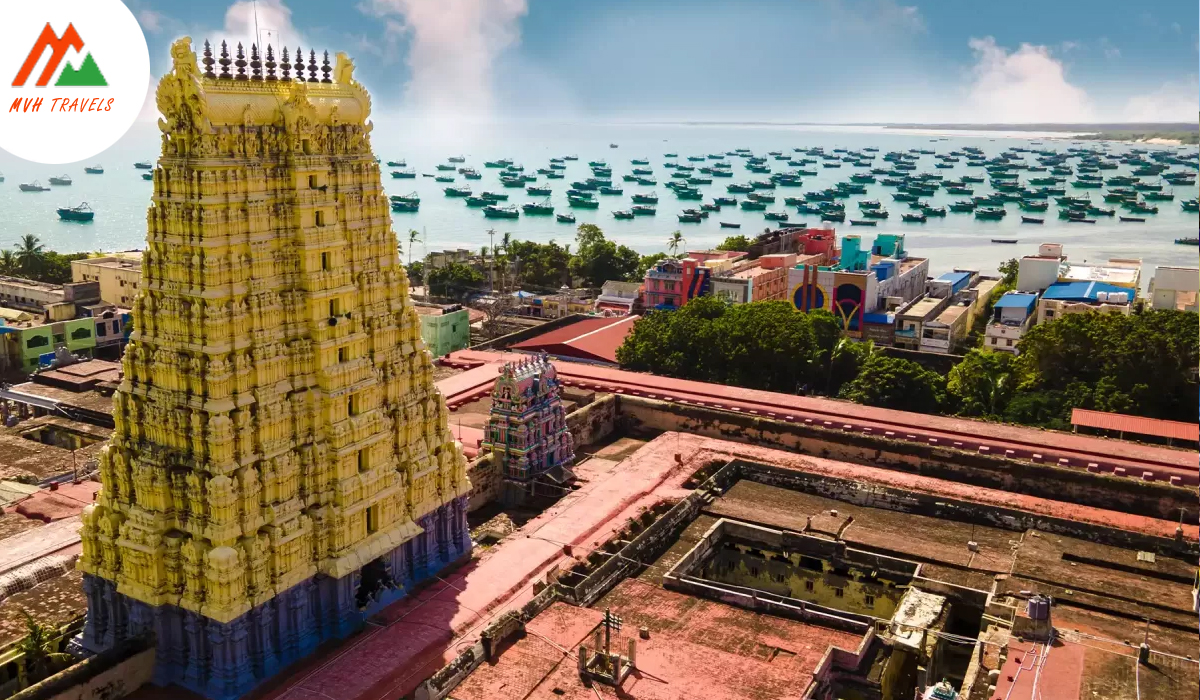
Rameshwaram
Rameshwaram, at the tip of the Indian peninsula, is a well-known destination for pilgrims. The city is located on the island of Pamban, separated from the mainland by the Pamban Channel. This pilgrimage is one of the sites of the revered Char Dham Yatra.
A visit to Rameshwaram is important for Hindus, as a pilgrimage to the holy city of Benaras is incomplete without a pilgrimage to Rameshwaram. This is the reason why Rameshwaram is also called the “Banaras of the South.” Ramanathaswamy Temple, a popular pilgrimage site, is one of the seven temples that pilgrims are required to visit once in their lifetimes to find salvation. The presiding deity of the temple is the Linga of Sri Ranganatha. It is the place where the Ramayana was conceived. The temples also house one of the 12 Jyotirlingas of Lord Shiva.
Rameshwaram is the place where Lord Rama built a bridge over the sea to save his consort Goddess Sita from Ravana.
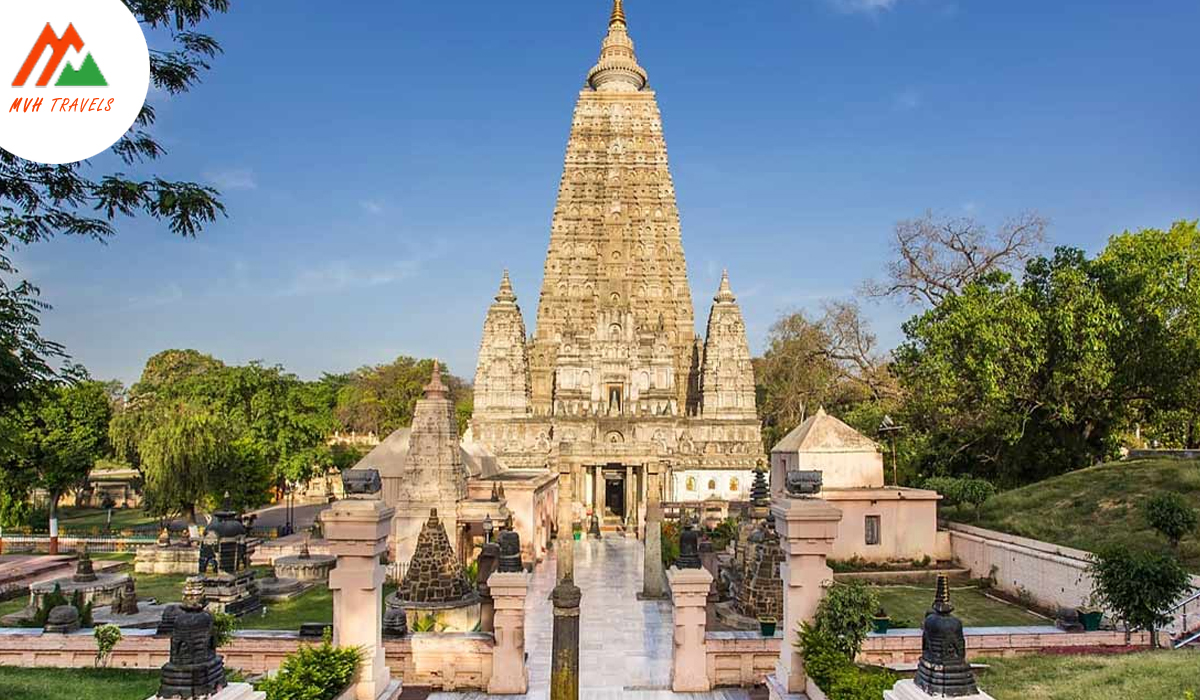
Mahabodhi temple
The Mahabodhi Temple is located in Bodh Gaya, where Gautama Buddha attained enlightenment. Lord Buddha came about 2,500 years ago in search of enlightenment. Then, while he was sitting under a banyan tree, he attained the supreme knowledge necessary to become Buddha, the enlightened one.
The place is considered one of the holiest pilgrimage sites for Buddhists in the world. It is said that each individual should visit the place at least once in his life, as it raises awareness among him or her about the law of impermanence. The temple is of immense importance to Buddhists. It houses the Maha Bodhi tree, under which Gautama attained enlightenment. The temple is also declared a UNESCO World Heritage Site.
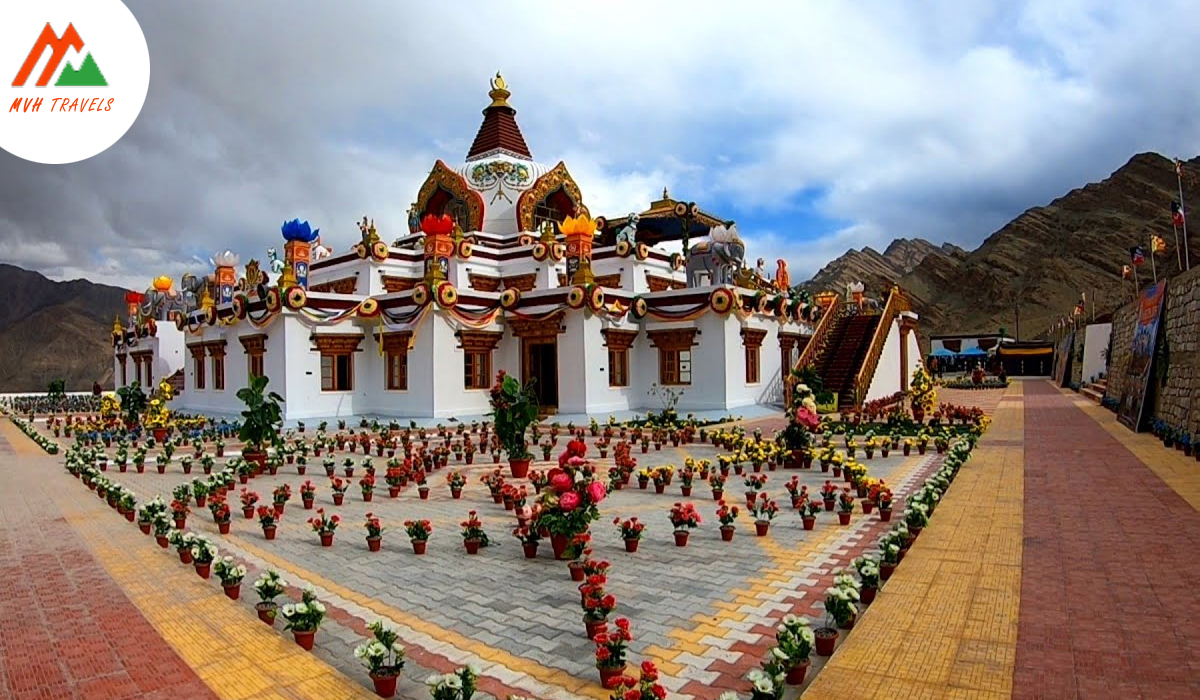
Hemis monastery
The largest and richest Buddhist monastery in Ladakh, Hemis Monastery, was built before the 11th century and was re-established in India in the year 1652. The monastery houses a large collection of ancient statues, sacred thangkas, and other artifacts. The main attraction of the monastery is the Hemis Festival, which is held every year in June/July. The Hemis Festival is a colorful celebration where many rituals and masked dances take place.
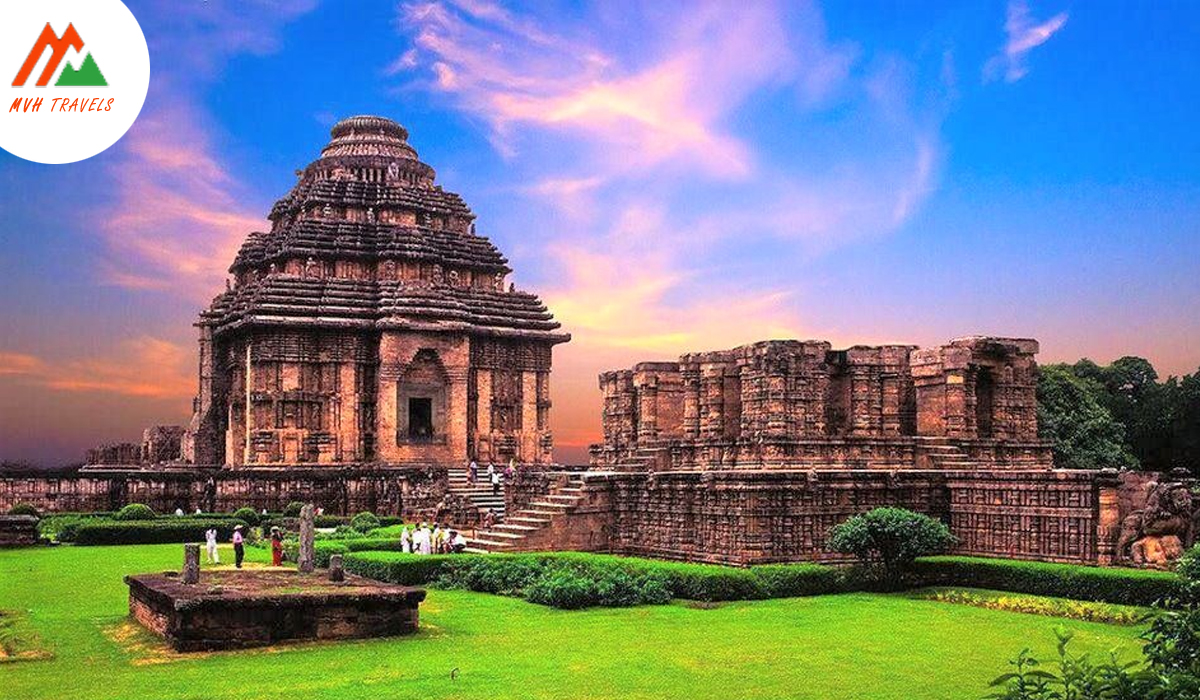
Sun Temple
The famous Sun Temple is located in Konark, Odisha. The Sun God, who resides in the temple and is mounted on a chariot, symbolizes the victory of King Narishadeva over several Muslim invaders. The temple is considered one of the masterpieces of Indian architecture. The spectacular architecture of the temple has 12 pairs of carved wheels and an offering hall. The walls of the temple present erotic scenes. The temple attracts art lovers and travel enthusiasts from all over the world. The temple is one of the most visited pilgrimage sites in India.
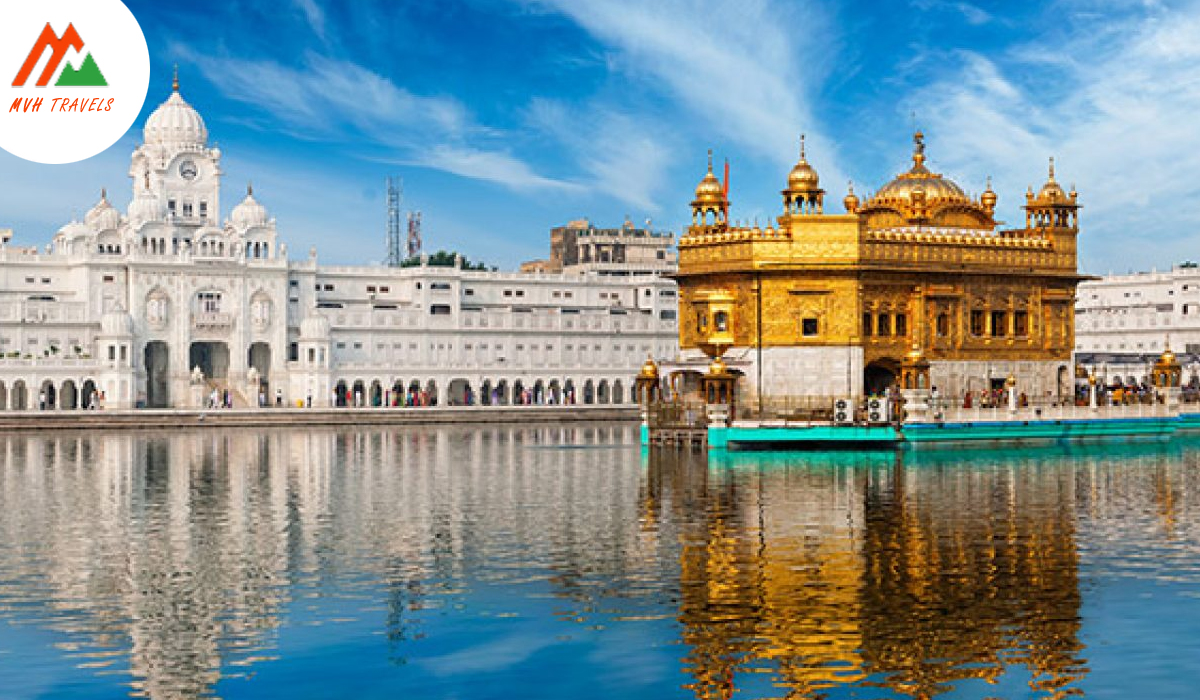
Golden Temple
Ramdass Sahib Ji, the fourth Sikh Guru, constructed the Golden Temple (Harmandir Sahib Ji). The Gurudwara is one of the most important Sikh pilgrimage sites in India. The place commemorates numerous historical Sikh events. The Gurdwara has Guru Granth Sahib, which is the holy scripture for Sikhs.
This Gurdwara is a symbol of equality and brotherhood that calls out to people of different religions. The site has an air of immense spirituality and tranquility. People from all over the country and the world visit the Golden Temple to receive holy blessings. There is a beautiful sarovar in the center of the Gurudwara where thousands of people take a holy bath.
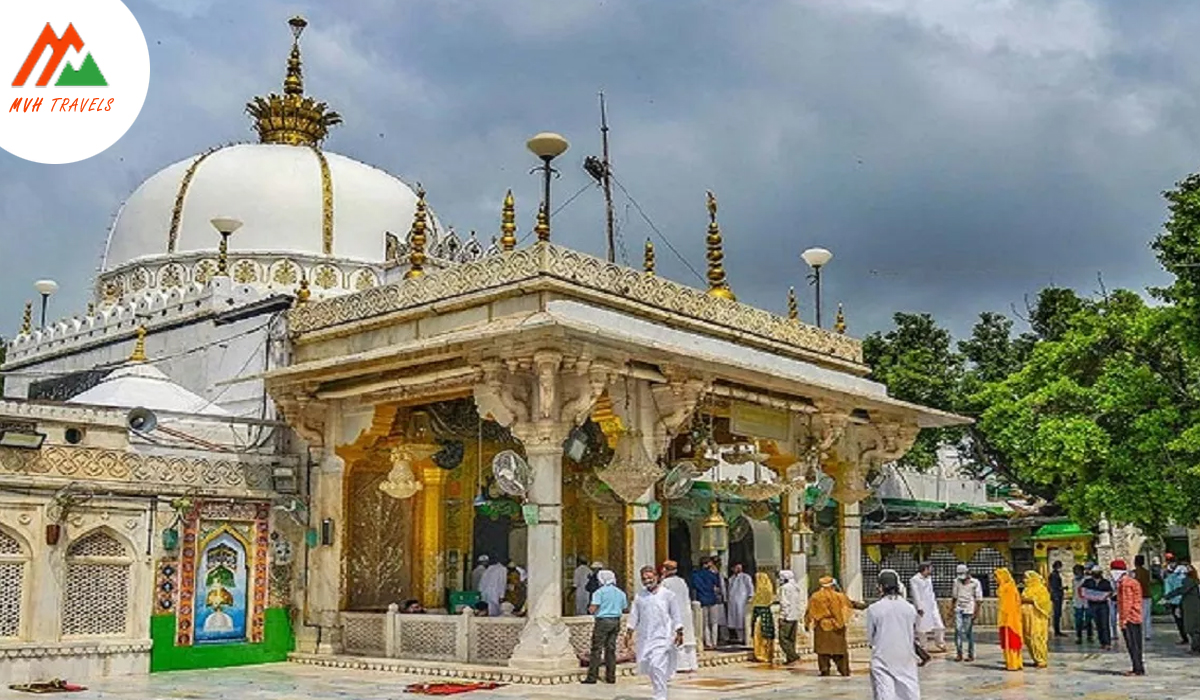
Ajmer Sharif
Khwaja Moinuddin Chishti lay peacefully here, listening to the wishes of the people and carrying them out. Once you enter the gate of Dargah, a strange peace comes over you. Millions of devotees from all over the world visit a holy shrine in Ajmer, Dargah Sharif, every year. The Dargah captivates one’s heart for many reasons. There is something magical about this place that people of different religions come and worship at. Although the dargah is always full, the best time to visit Ajmer Sharif is during the Urs festival. The place comes alive during this festival that is held every year.
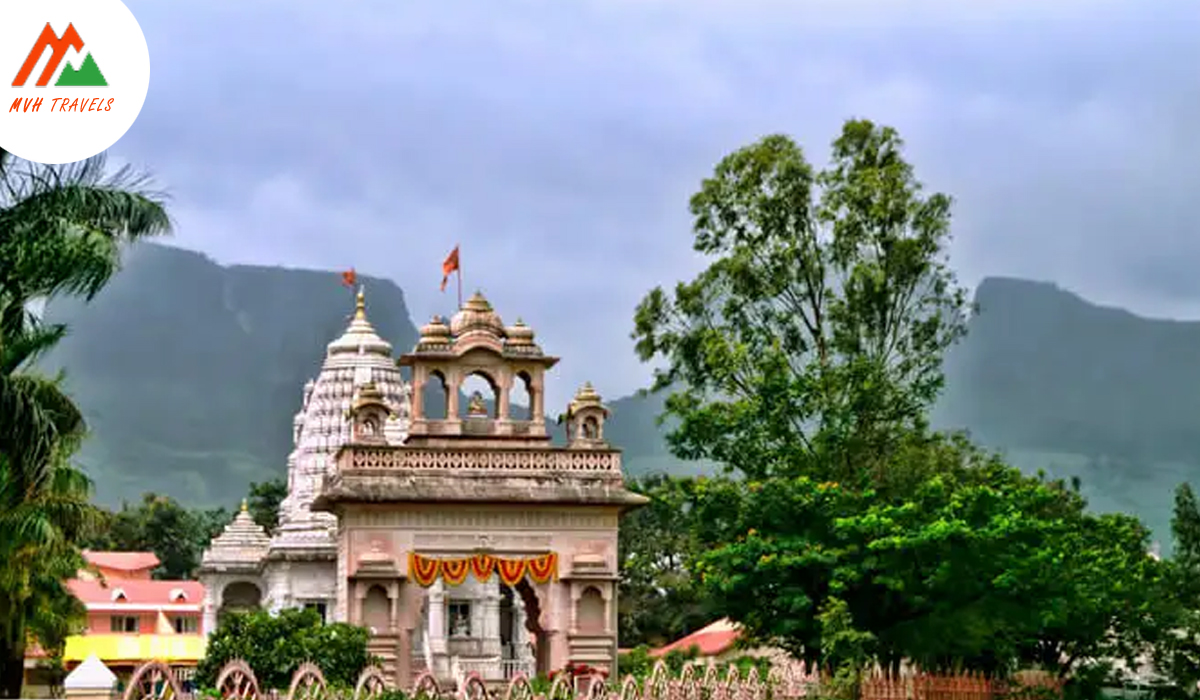
Shirdi
Located 122 km from Nashik, Shirdi is a beautiful little city that is home to one of Maharashtra’s most revered saints, Sai Baba. Sai Baba is believed to have visited Shirdi in the year 1858 and then spent 60 years of his life here until he attained samadhi (salvation) in 1918. It is believed that he still resides in Shirdi.
Sai Baba is considered the “Son of God” since he has always given the message of universal goodwill. He has worked for people all his life, which has earned him a following.
Today, the place is a popular Sai pilgrimage site, and devotees from all over the world visit it to seek Sai Baba’s blessings. Apart from the main Sai Baba shrine, there are many other holy shrines of Sai Baba, such as the Sai Baba Temple and Dwarakamayi.
